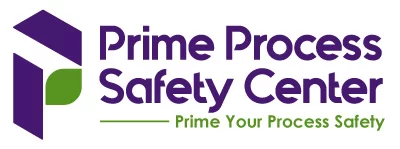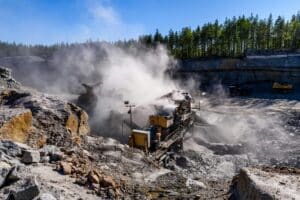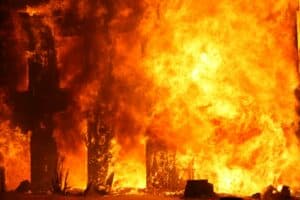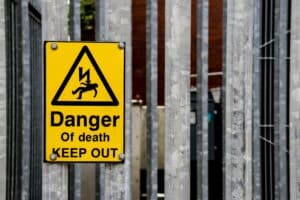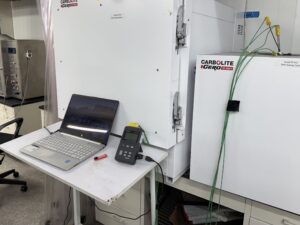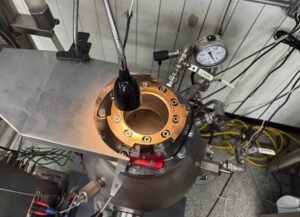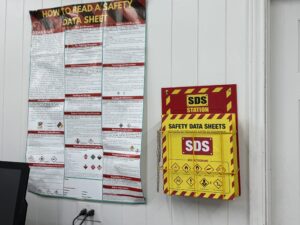We also offer
What Is Hazardous Area Classification(HAC)?
Hazardous Area Classification (HAC) is a safety assessment that identifies locations in your facility where flammable gases, vapors, or combustible dusts may create an explosive atmosphere. The goal is to reduce the risk of ignition by designing controls and selecting equipment that prevents fire or explosion in these classified areas.
HAC assessments follow either:
-
The NFPA/NEC Division system (commonly used in North America), or
-
The ATEX Zone system (used in Europe and IEC-based regions)
Once an area is classified, strict control of ignition sources—both electrical and non-electrical—is essential to maintaining safe operations.
Why Perform a Hazardous Area Classification?
HAC is not just a regulatory requirement—it’s a critical step in protecting people, property, and processes. Performing a hazardous area classification helps your facility:
-
Prevent fires or explosions from flammable gas or dust
-
Select and install compliant electrical and mechanical equipment
-
Meet OSHA, NEC (NFPA 70), ATEX, NFPA 497, and NFPA 499 standards
-
Minimize downtime and costly accidents
-
Ensure long-term safety and regulatory compliance
How HAC Works: Key Assessment Factors
A thorough HAC study includes:
-
Material Review: Identifying all flammable gases, vapors, liquids, and dusts
-
Release Source Identification: Locating where and how flammable materials could be released into the air
-
Ventilation Assessment: Evaluating airflow and its impact on vapor or dust dispersion
-
Ignition Risk Analysis: Assessing equipment, temperatures, and processes that could serve as ignition sources
-
Zone Determination:
-
Division system (NFPA/NEC): Class I (gases), Class II (dusts), and Class III (fibers), with Division 1 (high risk) and Division 2 (lower risk)
-
Zone system (ATEX/IEC):
-
Zone 0/20: Continuous or long-term presence of explosive atmosphere
-
Zone 1/21: Likely presence during normal operation
-
Zone 2/22: Unlikely, or short-duration presence
-
-
HAC Regulatory Standards and Codes
United States
-
NFPA 70 (NEC): Defines hazardous locations and equipment requirements
-
NFPA 497: For gases, vapors, and liquids
-
NFPA 499: For combustible dusts and fibers
Europe and IEC Regions
-
ATEX 95 / ATEX 137: Equipment and workplace directives
-
EN 60079-10 / EN 1127-1 / EN 50281-3: Hazardous location classification and protection
What’s Included in Our HAC Assessment
At Prime Process Safety Center, we follow a structured process to assess hazardous areas and recommend controls. Our service includes:
-
Site visit and walkthrough of hazardous material handling areas
-
Review of material properties (flash points, ignition temps, MIE, etc.)
-
Evaluation of ventilation effectiveness and pressure/temperature conditions
-
Zone classification mapping for combustible dust or gas risks
-
Recommendations for compliant electrical installations
-
Guidance on control measures (containment, ventilation, static control)
-
Regulatory documentation for compliance and internal training
-
Support with implementation, training, and long-term safety planning
Why Choose Prime Process Safety Center
- Specialists in Hazard Identification
- Customized, facility-specific assessments
- Deep knowledge of NEC, NFPA, and ATEX codes
- Proven fire and explosion prevention strategies
- Practical, implementable safety solutions
- Full regulatory compliance assurance
- Detailed reports and safety maps
- Ongoing support beyond the assessment
FAQ
1. What is Hazardous Area Classification?
It's the process of analyzing and classifying areas in industrial settings where flammable gases, vapors, mists, or dusts could create an explosive or fire hazard.
2. Why is Hazardous Area Classification important in industries?
It's crucial for ensuring the safe selection and installation of equipment, reducing the risk of ignition in areas with potentially explosive atmospheres, and ensuring compliance with safety regulations.
3. What industries typically require Hazardous Area Classification?
Industries like oil and gas, chemical manufacturing, pharmaceuticals, food processing, and any others where flammable materials are processed or stored.
4. How are hazardous areas classified?
Areas are classified based on the type, concentration, and likelihood of the presence of hazardous substances, typically into Zones (for gases and vapors) or Divisions (for dusts).
5. What standards are used for Hazardous Area Classification?
The most common standards include the National Electrical Code (NEC) in the US, the International Electrotechnical Commission (IEC) standards, and the European ATEX directives.
6. What is the difference between Zone and Division classification systems?
The Zone system, used internationally, categorizes areas into Zones 0, 1, and 2 for gases and 20, 21, and 22 for dusts, while the Division system, used mainly in North America, classifies areas into Division 1 and 2.
7. Who should perform Hazardous Area Classification?
Qualified professionals with expertise in process safety and knowledge of applicable standards should conduct these classifications.
8. What factors are considered during Hazardous Area Classification?
Factors include the type of hazardous materials present, their physical and chemical properties, operational processes, environmental conditions, and facility layout.
9. How does Hazardous Area Classification impact equipment selection?
It determines the type of explosion-proof or intrinsically safe equipment that should be used in different areas to prevent ignition of hazardous atmospheres.
10. Is Hazardous Area Classification a one-time requirement?
No, it should be reviewed and updated regularly, especially when there are changes in processes, materials, or facility layout, to ensure ongoing safety compliance.
11. What are some Potential Ignition Sources and Controls to be Considered in Hazardous Area Classification?
- Flames;
- Direct-fired space and process heating;
- Use of cigarettes/matches etc;
- Cutting and welding flames;
- Hot surfaces;
- Heated process vessels such as dryers and furnaces;
- Hot process vessels;
- Space heating equipment;
- Mechanical machinery;
- Electrical equipment and lights
- Spontaneous heating;
- Friction heating or sparks;
- Impact sparks;
- Sparks from electrical equipment;
- Stray currents from electrical equipment
- Electrostatic discharge sparks:
- Lightning strikes.
- Electromagnetic radiation of different wavelengths
12. In what way can ignition sources effectively controlled in all hazardous areas ?
- Using electrical equipment and instrumentation classified for the area in which it is located. New mechanical equipment will need to be selected in the same way.
- Grounding of all plant/ equipment.
- Elimination of surfaces above auto-ignition temperatures of flammable materials being handled/stored
- Provision of lightning protection
- Correct selection of vehicles/internal combustion engines that have to work in the zoned areas (see Technical Measures Document on Permit to Work Systems);
- Correct selection of equipment to avoid high intensity electromagnetic radiation sources, e.g. limitations on the power input to fibre optic systems, avoidance of high intensity lasers or sources of infrared radiation
- Prohibition of smoking/use of matches/lighters
- Controls over the use of normal vehicles
- Controls over activities that create intermittent hazardous areas, e.g. tanker loading/unloading
- Control of maintenance activities that may cause sparks/hot surfaces/naked flames through a Permit to Work System
13. What are some best practices for hazardous area classification?
- Follow established engineering practices such as NFPA, API, NEC, IEC and PIP etc.
- Ensure that hazardous area requirements are established before purchasing equipment.
- Ensure that hazardous area classification layouts reflect the current status of the facility.
- Review and update layouts before each modification.
- Ensure that the addition of new equipment does not impact existing equipment / facility and if so, take corrective action.
- Ensure that the area classification "cloud does not encroach roads, walkways, occupied buildings, welding / fabrication yards etc.
- Perform a thorough review when introducing new sources of release in an existing facility.
- Ensure equipment installed in the classified area is rated for service conditions.
- Follow the manufacturer’s installation manual, applicable codes and standards.
- Maintain proper documentation.
14. What are some precautions to be taken in hazardous areas?
Precautions include compliance with classifications (according to NEC), training and awareness programs, prevention of ignition sources, regular maintenance and inspection, proper ventilation, use of appropriate Personal Protective Equipment (PPE), and implementation of an emergency response plan and permit-to-work system.
15. What main safety measures to take for Class I, Class II, and Class III locations?
Safety measures vary for each class. For Class I locations, use explosion-proof equipment and proper ventilation to handle flammable gases or vapors. Class II locations require dust-tight equipment and dust control to manage combustible dust hazards. In Class III locations, protect against ignitable fibers with proper enclosures and handling protocols.
16. What is explosion-proof Protection and intrinsically safe protection?
Explosion-proof protection is a type of protection that involves using an enclosure capable of withstanding an explosive gas or vapor within it. The enclosure also prevents the ignition of an explosive gas or vapor surrounding it. This type of protection operates at an external temperature that ensures the surrounding explosive atmosphere will not be ignited.
Intrinsically safe protection ensures that electrical equipment, under normal or abnormal conditions, is incapable of releasing sufficient electrical or thermal energy to cause ignition of a specific hazardous atmospheric mixture in its most easily ignitable concentration.

